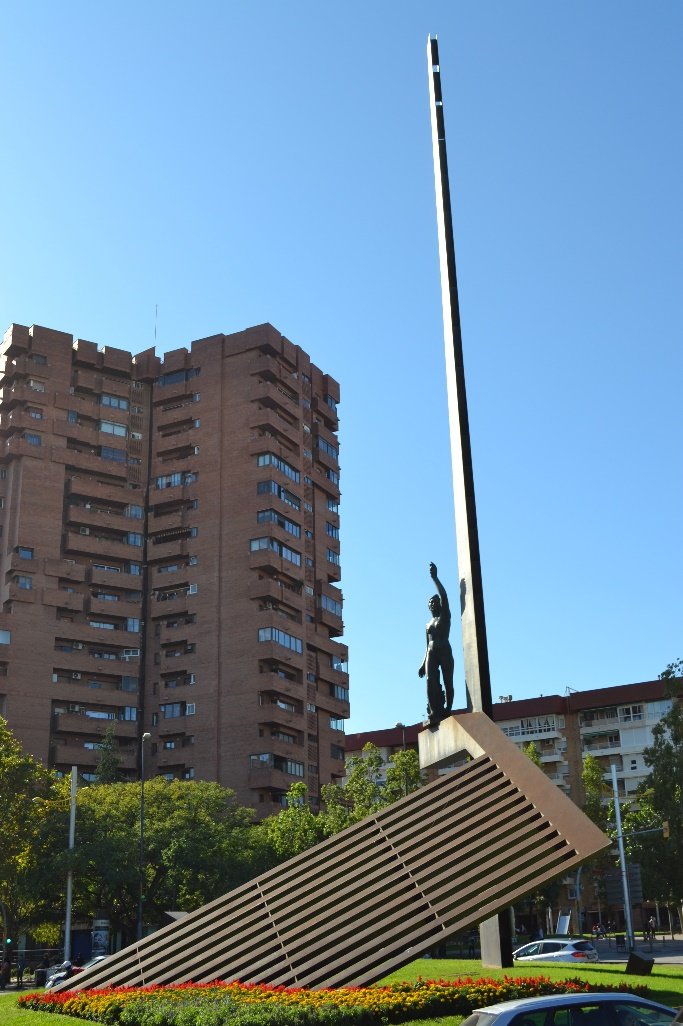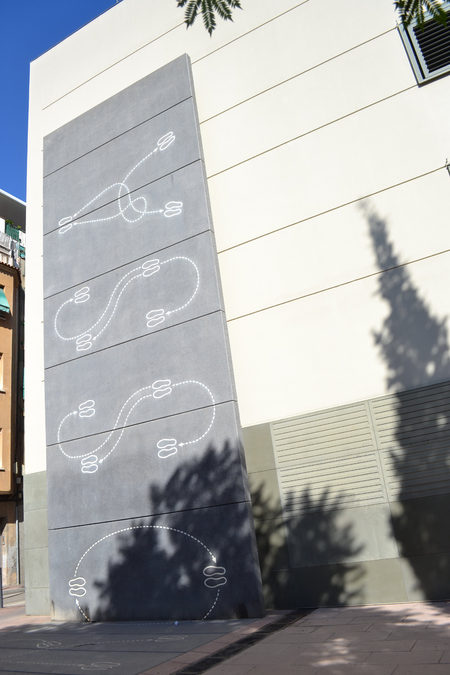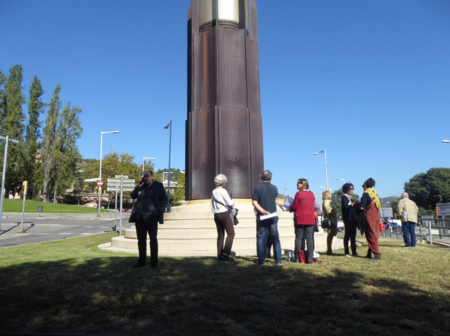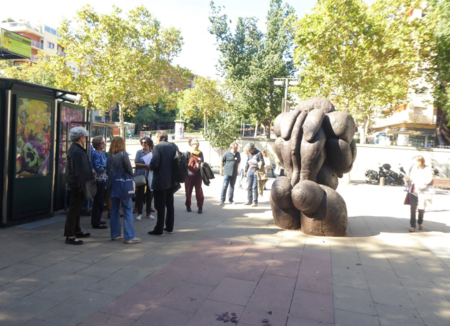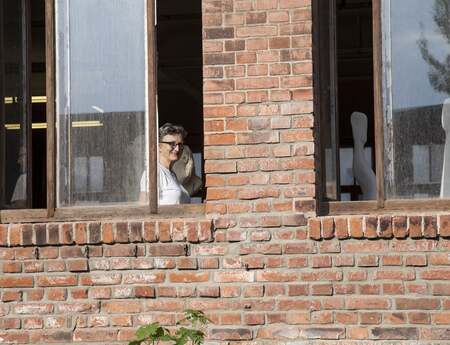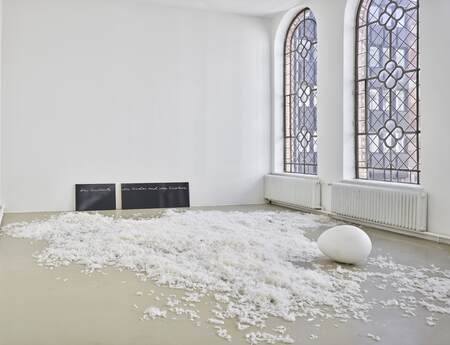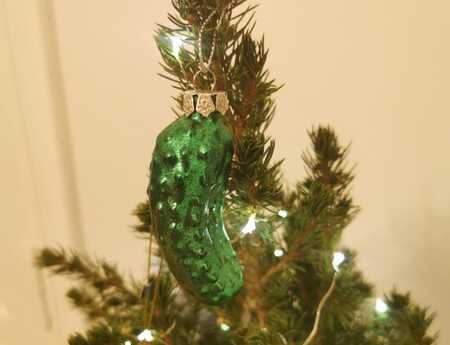Dialogue in Barcelona: Guided visit to the sculptures of Via Júlia
On October 26th, sculpture network organized a visit to the sculptures along the Via Júlia and in small squares in the surrounding area.
Guided by Dr. Josep Roy, sculptor, professor of the Department of Sculpture of the Faculty of Fine Arts of the University of Barcelona, researcher and writer of many articles on contemporary public sculpture and urban space, we visited an emblematic public thoroughfare of Barcelona. A major redevelopment project (1986) turned Via Júlia into one of the most well-resolved walks in Nou Barris, which also has notable sculptures.
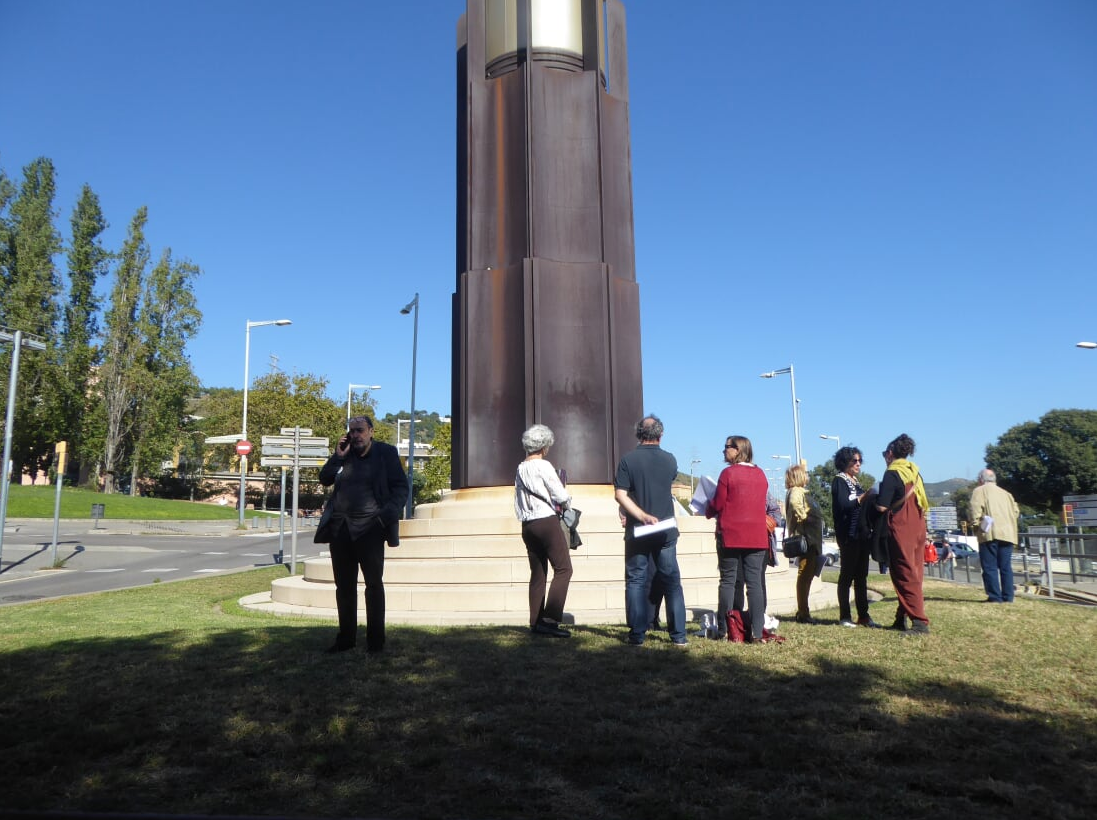
Along the route we could see and in this order:
- Torre Favència by Antoni Roselló;
- Als nous catalans by Sergi Aguilar;
- The monument A Josep Anselm Clavé i a l'Agrupació Sardanista l'Ideal d'en Clavé;
- Escullera by Jaume Plensa
- Font mutant by Enric Pladevall
- A Brossa by Perejaume and
- La República by Josep Viladomat
During the visit to the sculptures, Dr. Josep Roy illustrated the keys to understanding the functions of public sculpture: commemorative, ornamental, experimental, integrating and signposting/symbolizing, examples that we learned in our journey.
Analytical approach for the understanding of the functions of public sculpture in the surroundings of the Via Júlia.
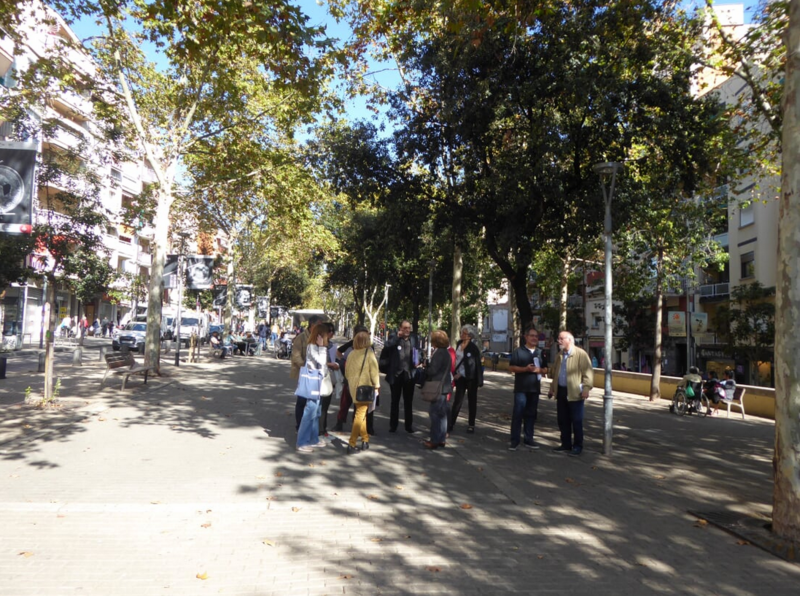
Torre Favència by Antoni Roselló
The function of this sculptural element is clearly framed by its typology within a signalling and symbolising function, providing a transverse union between sculpture, architecture, design and engineering. It is an unequivocal symbol of the place and reference in the Via Júlia in Barcelona. (Year: 1986; Materials: corten, concrete, glass and light).
Als nous catalans (To the New Catalans) by Sergi Aguilar
Sculpture derived from the geometric abstraction of large format, has a desire to signal the place while being a memory and tribute to the immigrants who were the first inhabitants of the neighborhood, according to the inscription placed in front of the piece. "ALS NOUS CATALANS / FES QUE SEGUUIN SEGURS ELS PONTS DEL DIÀLEG I MIRA DE COMPRENDRE I ESTIMAR LES VEUS I LES PARLAS DIVERSAS DELS TEUS FILLS. SALVADOR ESPRIU / BARCELONA, APRIL 1986". (Year: 1986; Material: steel).
A Josep Anselm Clavé i a l'Agrupació Sardanista l'Ideal d'en Clavé
Bronze medallion recovered and exhibited in public space on a granite block, its typology has a commemorative function for its subject matter is placed in the civil field of commemorations and recognitions. (Year: 1994; Materials: bronze on granite block).
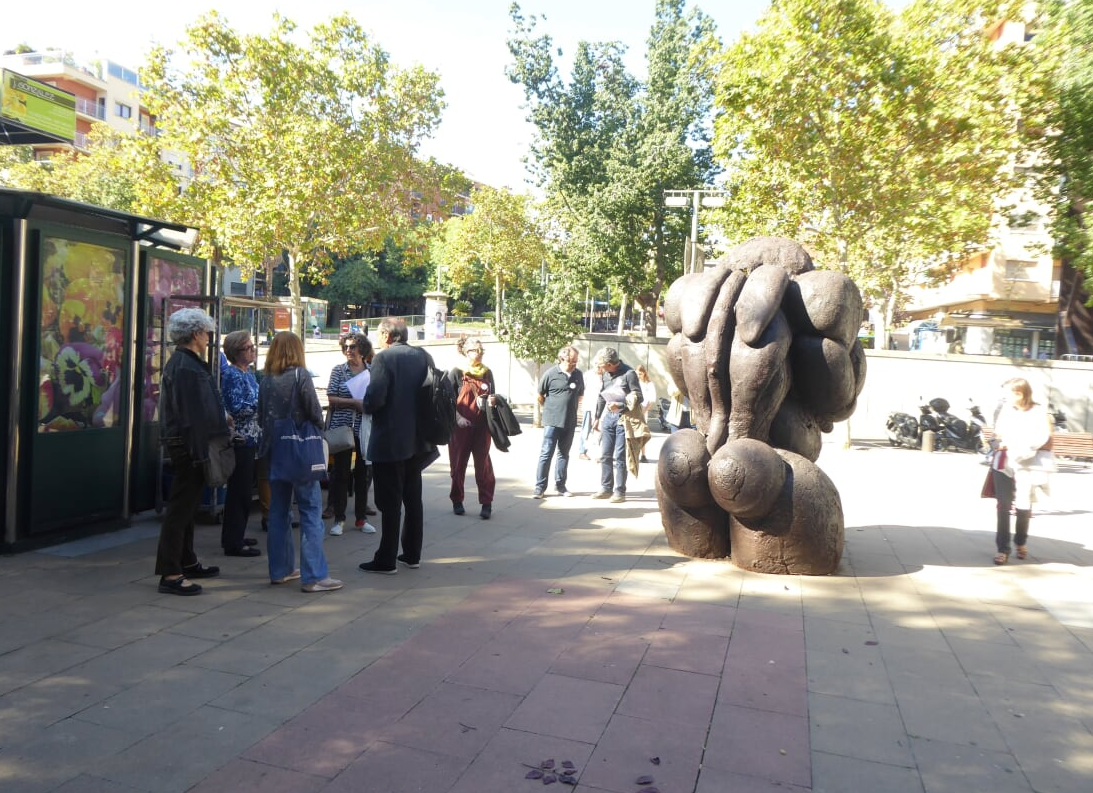
Photo: Josep Pagà
Escullera by Jaume Plensa
Set of three sculptures with morphological references with an experimental function. The pieces are resolved with an organic abstraction with great compactness, specific, and visual weight aims to integrate the place and be an experience of it. (Year: 1988; Material: cast iron).
Font mutant by Enric Pladevall
Sculpture relocated and altered from the initial location due to urban perversion of the area. It is a sculpture with a clear will to integrate with the place, contributing an important added value to the square. (Year: 1986; Materials: bronze and tin).
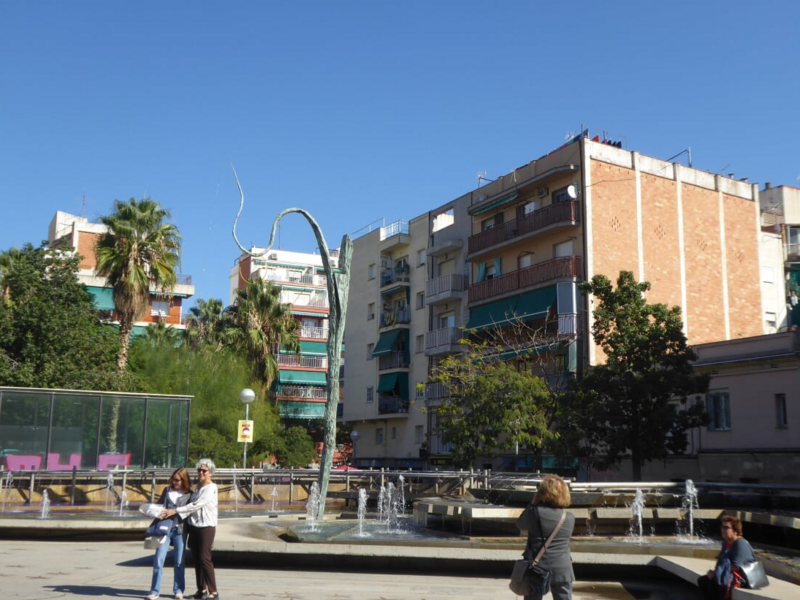
A Brossa by Perejaume
Proposal in homage to Joan Brossa, master and precursor of visual poems, with a mural element that is clearly defined as a visual poem. The work is suitably integrated in the facade and linked to a side of the square and its execution and scale provide impeccable ornamentation and integration. (Year: 2009; Materials: artificial stone, white resin drawing, laminated steel interior structure).
“La República” de Josep Viladomat,
Photo: Imma Pueyo
La República by Josep Viladomat and Homenatge a Pi i Margall by Joan Pie
Support designed by Albert Viaplana and Helio Piñón to resituate the bronze statue of the Republic and the stone medallion in homage to Pi i Margall. The ensemble has a signalling and symbolising function, however the statue can be placed commemoratively and the medallion ornamentally. The weight of the whole is carried by the obelisk created for this purpose, which marks and defines the place. (Year: 1990, includes pieces from 1934; Materials: bronze sculpture and white marble medallion on structure.
Authors: Dr. Josep Roy, Neus Bergua, Imma Pueyo
Cover picture: "A Brossa" de Perejaume, Photo: Imma Pueyo
